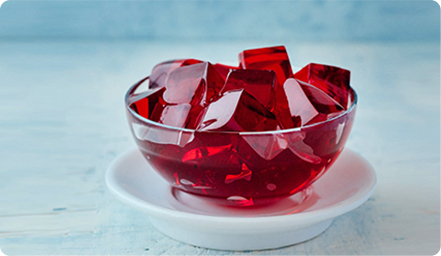-
July, 26,2025
Understanding the Role of Bloom Strength in Soft Gelatin Capsules
-
July, 25,2025
Bloom Strength and Its Impact on Hard Gelatin Capsules
-
July, 21,2025
How Gelatin Is Revolutionizing Pet Food: A Healthier Option for Dogs
-
June, 22,2025
Collagen as a Trusted Ingredient: Meeting Global Demand with Reliable Supply
Marshmallow Ingredients: What Makes These Treats So Fluffy?
Marshmallows are beloved treats that have captured the hearts of many with their soft, spongy texture and delightful sweetness. Whether roasted over a campfire, melted into hot cocoa, or used as a topping for desserts, marshmallows have become a staple in sweet indulgences. But have you ever wondered about the marshmallow ingredients that give them their iconic texture and flavor? In this article, we will delve into the ingredients in marshmallows, the role of gelatin, and how these ingredients work together to create the perfect marshmallow.
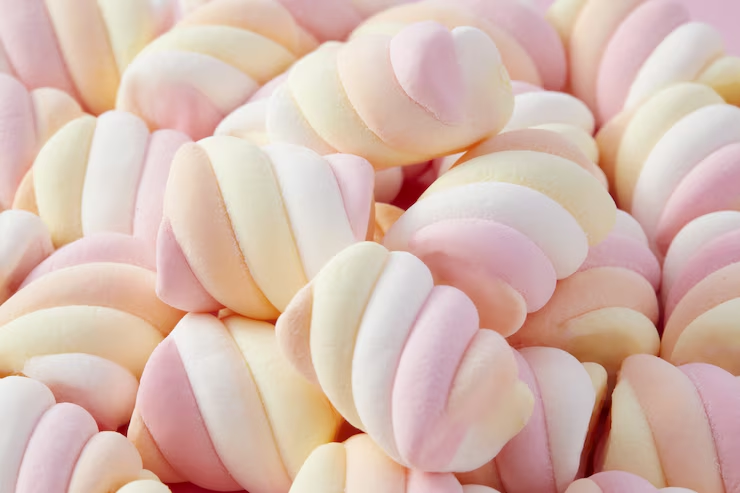
The Core Ingredients in Marshmallows
To understand the fluffiness and flavor of marshmallows, it’s essential to explore the basic ingredients in marshmallows. While the recipe may vary slightly depending on whether they are made at home or commercially, the core ingredients remain relatively consistent. The main components that make up marshmallows are sugar, gelatin, water, and air, each of which plays a significant role in creating the final product.
Sugar
Sugar is the most fundamental ingredient in marshmallows. In fact, without sugar, you wouldn’t have that characteristic sweetness that marshmallows are known for. Sugar helps to provide both flavor and structure to marshmallows. The primary sugar used in marshmallow recipes is granulated sugar, although corn syrup is also used in commercial marshmallows to prevent crystallization and improve the texture. The syrup also helps with achieving the chewy consistency that makes marshmallows enjoyable to eat.
In addition to its sweetness, sugar plays an essential role in controlling the texture. The process of heating sugar and dissolving it in water creates a syrupy liquid that, when combined with gelatin, forms the basis for the marshmallow’s structure. Without the right balance of sugar and syrup, marshmallows would lack the smooth, consistent texture that we love.

Gelatin
One of the most crucial ingredients in marshmallows is gelatin, a natural protein derived from animal collagen. Gelatin is what gives marshmallows their signature texture — smooth, elastic, and airy. This ingredient is what allows marshmallows to hold their shape, giving them the perfect balance between fluffiness and chewiness.
Gelatin is a gelling agent that works by forming a network of proteins that trap air bubbles, resulting in a soft yet firm texture. It is typically dissolved in hot water before being incorporated into the marshmallow mixture, and once cooled, it sets the marshmallow into its final, spongy form. For manufacturers, sourcing gelatin from reliable gelatin manufacturers is essential. Many edible gelatin manufacturers produce gelatin for the candy industry, providing a key ingredient for making marshmallows.
For those looking for specific gelatin options, beef gelatin manufacturers offer a variety of gelatin products that are commonly used in confectionery, including marshmallows. Other options, like plant-based or vegan gelatin alternatives, are also available for those seeking alternatives to animal-derived gelatin, such as agar-agar, a gelatin substitute made from seaweed.
For manufacturers seeking top-quality food-grade gelatin for marshmallow production, Funingpu, a trusted gelatin manufacturer, provides high-quality pork and bovine hide gelatin that ensures the desired texture and elasticity in marshmallows.

Water
Water is another crucial ingredient that helps to dissolve the sugar and gelatin, ensuring the proper consistency for marshmallow production. The right amount of water is essential to the mixture, as it influences the overall texture and helps activate the gelatin.
While water is necessary for dissolving the other ingredients, it also contributes to the marshmallow’s texture. Too much water can lead to a runny mixture, while too little water can make the marshmallow mixture difficult to incorporate into the mold. Thus, controlling the water ratio is a critical step in marshmallow production.
Air
Perhaps one of the most interesting aspects of marshmallow production is the role of air. Air is a key component in marshmallows, contributing significantly to their light, fluffy texture. The process of whipping the marshmallow mixture introduces air into the mixture, which is then trapped by the gelatin and sugar network. This incorporation of air creates the puffiness that makes marshmallows so delightful to eat.
Without sufficient air, marshmallows would be dense and lacking in their signature fluffy bite. The method of whipping the marshmallow mixture — typically with an electric mixer or large industrial machines — is essential for achieving the correct texture. The air bubbles trapped in the mixture are what give marshmallows their characteristic lightness, ensuring they are both soft and airy.
The Role of Gelatin in Marshmallow Production
As mentioned, gelatin is one of the most important ingredients in marshmallows. It serves as the gelling agent responsible for giving marshmallows their unique texture. The process of gelatin extraction involves boiling animal collagen (usually derived from beef or pork), which is then dried and powdered. The powdered gelatin can be used to make a variety of products, including marshmallows.
The gelatin process in marshmallow production begins with dissolving gelatin in water. This mixture is then combined with heated sugar syrup, forming the foundation of the marshmallow. After whipping, the gelatin sets the marshmallow mixture into a firm yet airy texture. This setting process creates the delicate balance of elasticity and softness that we associate with marshmallows.
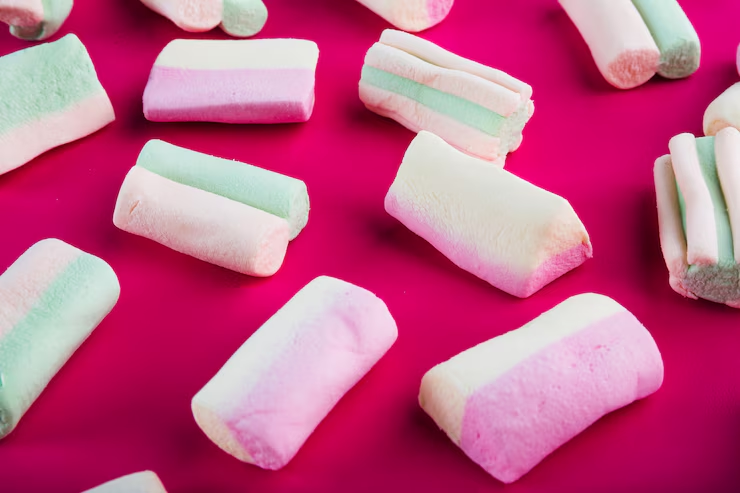
For manufacturers, sourcing quality gelatin is essential. Many gelatin manufacturers produce specific grades of gelatin for the confectionery industry, ensuring consistency and texture in marshmallow production. Whether sourcing gelatin from beef gelatin manufacturers or candy gelatin suppliers, the choice of gelatin impacts the final product’s texture and overall quality.
Gelatin’s versatility is a major factor in its widespread use in confectionery, including marshmallows. It is stable and reliable, ensuring that marshmallows hold their shape even in varying temperatures. Without gelatin, marshmallows would not have their signature bouncy, springy texture, and the final product would be far less enjoyable.
The key points about the role of gelatin in marshmallow production are:
- ·Gelatin as a Gelling Agent: Gelatin provides structure and elasticity to marshmallows.
- ·Air Trapping: Gelatin helps trap air bubbles, contributing to the light and fluffy texture of marshmallows.
- ·Traditional Source: Animal-based gelatin (typically from beef or pork) is commonly used in marshmallow production.
- ·Plant-Based Alternatives: Vegan options, such as agar-agar or carrageenan, are used in place of animal-based gelatin.
- ·Setting the Texture: Gelatin helps the marshmallow mixture set into a firm yet soft structure when cooled.
Funingpu offers premium food-grade gelatin from both pork and bovine hides, providing the necessary gelling properties for marshmallow production and ensuring a soft, chewy texture.
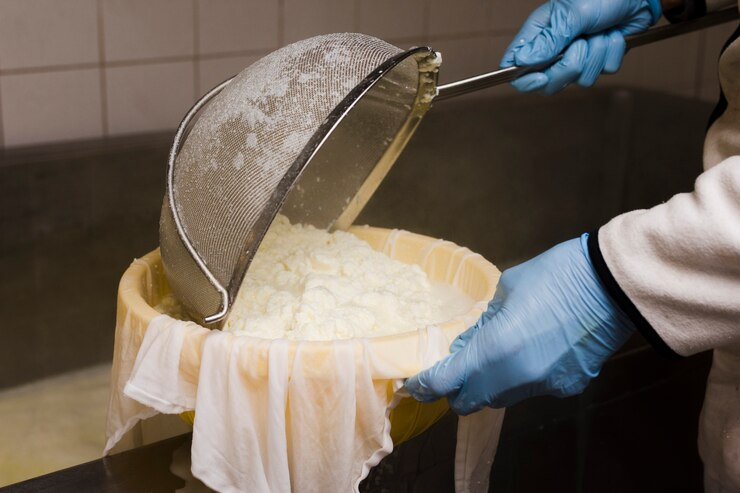
How Marshmallow Ingredients Work Together
The key to creating the perfect marshmallow lies in how the ingredients interact with each other. Each ingredient — sugar, gelatin, water, and air — works in harmony to produce the final texture, flavor, and consistency of the marshmallow. Here’s a closer look at how the ingredients come together in the production process.
-
1. Dissolving Sugar and Gelatin: The first step in marshmallow production is to dissolve sugar in water, creating a syrup. The gelatin is then added and dissolved in hot water. This combination forms a stable base that will set as it cools.
-
2. Whipping and Air Incorporation: Once the sugar and gelatin have been dissolved, the mixture is whipped to incorporate air. The gelatin helps trap the air, giving the marshmallow its fluffy texture. The longer the mixture is whipped, the more air is incorporated, resulting in a lighter and fluffier marshmallow.
-
3. Setting the Mixture: After the mixture is whipped, it is poured into molds or onto a flat surface where it is allowed to cool and set. The gelatin hardens as the mixture cools, holding the air bubbles in place and giving the marshmallow its firm yet spongy texture.
-
4. Cutting and Coating: Once the marshmallow has set, it is typically cut into cubes or other shapes and coated with cornstarch or powdered sugar to prevent sticking.
The careful balance between these ingredients — and the way they are combined — ensures that marshmallows have the perfect texture and sweetness. The role of gelatin cannot be overstated, as it is the key ingredient that allows all the other components to come together in the perfect way.
With Funingpu's pork and bovine hide gelatin, manufacturers can count on consistency and quality, crucial in the gelatin activation and whipping stages of marshmallow production.
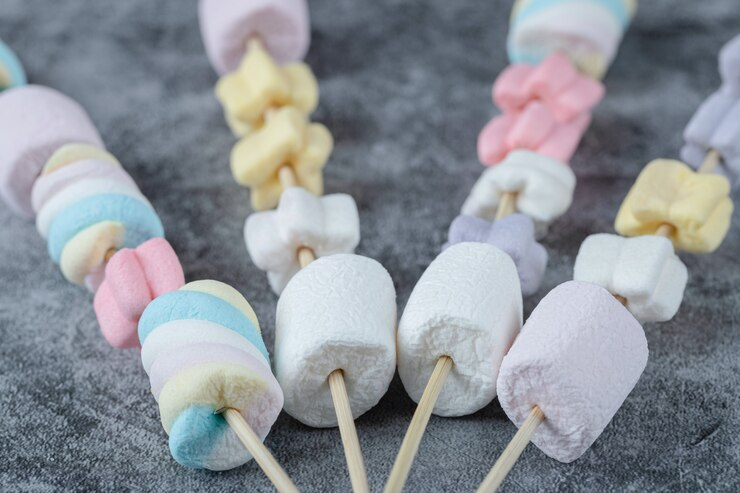
Final Thoughts
Marshmallows are a delightful treat loved by many, and their light, airy texture is what makes them so special. The combination of marshmallow ingredients such as sugar, gelatin, water, and air work together to create the perfect marshmallow experience. Gelatin plays a particularly crucial role, providing the structural integrity and fluffiness that make marshmallows so enjoyable to eat.
When producing marshmallows, the quality of gelatin is crucial to achieving the perfect texture and consistency. Funingpu, with its food-grade pork and bovine hide gelatin, ensures that manufacturers can deliver the best products to consumers, maintaining high standards throughout production.
Understanding the ingredients in marshmallows gives us an appreciation for the science behind their creation. From the candy gelatin suppliers who provide high-quality gelatin to the manufacturers who carefully whip the mixture, every step of the process contributes to the final product. Whether you enjoy marshmallows in hot chocolate, as a treat by themselves, or roasted over a campfire, knowing the ingredients in marshmallows helps us better understand what makes these sweet, fluffy treats so irresistible.
FAQ
1. What are marshmallows made of?
Marshmallows are primarily made of sugar, gelatin, water, and air. These ingredients combine to create the signature sweet, airy texture of marshmallows.
2. Where does gelatin come from?
Gelatin is typically derived from animal collagen, often from beef or pork, though there are vegan alternatives available.
3. Why is gelatin important in marshmallows?
Gelatin is essential in marshmallow production because it acts as a gelling agent, giving marshmallows their unique texture — firm yet fluffy.
4. How do marshmallow ingredients work together?
The combination of sugar, gelatin, water, and air creates a stable mixture that is whipped, set, and cooled to form the final marshmallow with its signature fluffy texture.
Phone: +86-577-88105990
Mobile: +86-138 5886 1938
Official Website: www.fnp-gelatin.com
Email: sales@funingpu.com
Address: No. 1-10 Wenpu Road, Yacheng Town, Xiapu County, Ningde City, Fujian Province

